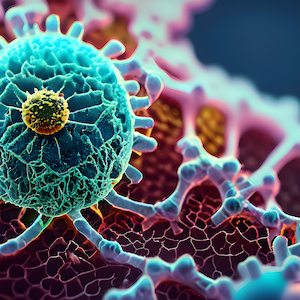Factors predicting mortality among patients with COVID-19 associated hospital acquired pneumonia: insights from a tertiary care center

Submitted: September 23, 2022
Accepted: November 18, 2022
Published: December 14, 2022
Accepted: November 18, 2022
Abstract Views: 2311
PDF: 290
Publisher's note
All claims expressed in this article are solely those of the authors and do not necessarily represent those of their affiliated organizations, or those of the publisher, the editors and the reviewers. Any product that may be evaluated in this article or claim that may be made by its manufacturer is not guaranteed or endorsed by the publisher.
All claims expressed in this article are solely those of the authors and do not necessarily represent those of their affiliated organizations, or those of the publisher, the editors and the reviewers. Any product that may be evaluated in this article or claim that may be made by its manufacturer is not guaranteed or endorsed by the publisher.
Similar Articles
- Arkapal Bandyopadhyay, Sarika Palepu, Krishna Bandyopadhyay, Shailendra Handu, COVID-19 and tuberculosis co-infection: a neglected paradigm , Monaldi Archives for Chest Disease: Vol. 90 No. 3 (2020)
- Kenan Yalta, Ugur Ozkan, Tulin Yalta, Ertan Yetkin, Takotsubo syndrome in association with pheochromocytoma: clinical and practical considerations , Monaldi Archives for Chest Disease: Vol. 91 No. 4 (2021)
- Marco Moscarelli, Ruggero De Paulis, The phyllotaxis of the aortic valve , Monaldi Archives for Chest Disease: Vol. 89 No. 3 (2019)
- Halil Yanardag, Cuneyt Tetikkurt, Muammer Bilir, Finger clubbing and cirrhosis in a sarcoidosis patient , Monaldi Archives for Chest Disease: Vol. 89 No. 3 (2019)
- Kenan Yalta, Gokay Taylan, Tulin Yalta, Ertan Yetkin, Takotsubo cardiomyopathy in the setting of multiple sclerosis: a multifaceted phenomenon with important implications , Monaldi Archives for Chest Disease: Vol. 90 No. 3 (2020)
- Christos Kakos, Savvas Lampridis, Georgios Geropoulos, Reena Khiroya, Achilleas Antonopoulos, Sofoklis Mitsos, Nikolaos Panagiotopoulos, Cystic fibrohistiocytic tumour of the lung presenting with recurrent pneumothoraces: a case report , Monaldi Archives for Chest Disease: Vol. 90 No. 3 (2020)
- Biswajit Maharana , Pallab Chakraborty, Sudhan Rackimuthu , Rusab Baig, Shreeji Kadakia, Paradoxical role of oxygen in the treatment of patients with COVID-19 , Monaldi Archives for Chest Disease: Vol. 92 No. 2 (2022)
- Jury Brandolini, Francesca Ambrosi, Pietro Bertoglio, Barbara Bonfanti, Sergio Nicola Forti Parri, Elena Garelli, Kenji Kawamukai, Piergiorgio Solli, Robotic resection of mediastinal left vagus neurofibroma , Monaldi Archives for Chest Disease: Vol. 93 No. 1 (2023)
You may also start an advanced similarity search for this article.

 https://doi.org/10.4081/monaldi.2022.2436
https://doi.org/10.4081/monaldi.2022.2436





